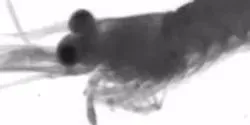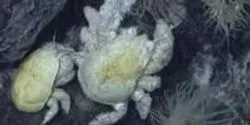marine biology

Texas A&M University at Galveston has just taken delivery of a new $2.5 million dollar research vessel: the R/V Trident.

Nanomaterials commonly used in sunscreens and boat-bottom paints are making sea urchin embryos more vulnerable to toxins, according to a study from the University of California, Davis. The authors said this could pose a risk to coastal, marine and freshwater environments.

Ocean researchers like to say we know less about the Earth’s seas than the moon. With less than 5 percent of the world’s oceans explored, big discoveries await. To find them, University of Rhode Island students are learning to build the next generation of autonomous underwater vehicles, or AUVs, used to map seafloors, study ocean movement, locate sunken objects, research sea life and more.

University of Delaware researcher Jonathan Cohen is using a new technology to analyze and quantify zooplankton in the Delaware Bay.

On their most recent trip to study seeps, Indiana State University scientists made a big discovery regarding a tiny creature that lives in both seep and non-seep habitats.

After the worst coral bleaching event ever recorded in Hawai'i, University of Hawai'i scientists and researchers with the Hawai'i Institute of Marine Biology (HIMB) are diligently monitoring and testing affected coral reefs in Kane'ohe Bay, along with other areas on O'ahu, and parts of the Northwestern Hawaiian islands.

Alcohol consumption isn’t the only thing a breath analysis can reveal. Scientists have been studying its possible use for diagnosing a wide range of conditions in humans — and now in the beloved bottlenose dolphin. In a report in the American Chemical Society (ACS) journal Analytical Chemistry, one team describes a new instrument that can analyze the metabolites in breath from dolphins, which have been dying in alarming numbers along the Atlantic coast this year.

University of Tennessee, Knoxville, research finds life can persist in a cold, dark world.

Researchers at the University of California, San Diego School of Medicine have discovered a widely distributed group of marine bacteria that produce compounds nearly identical to toxic man-made fire retardants.









